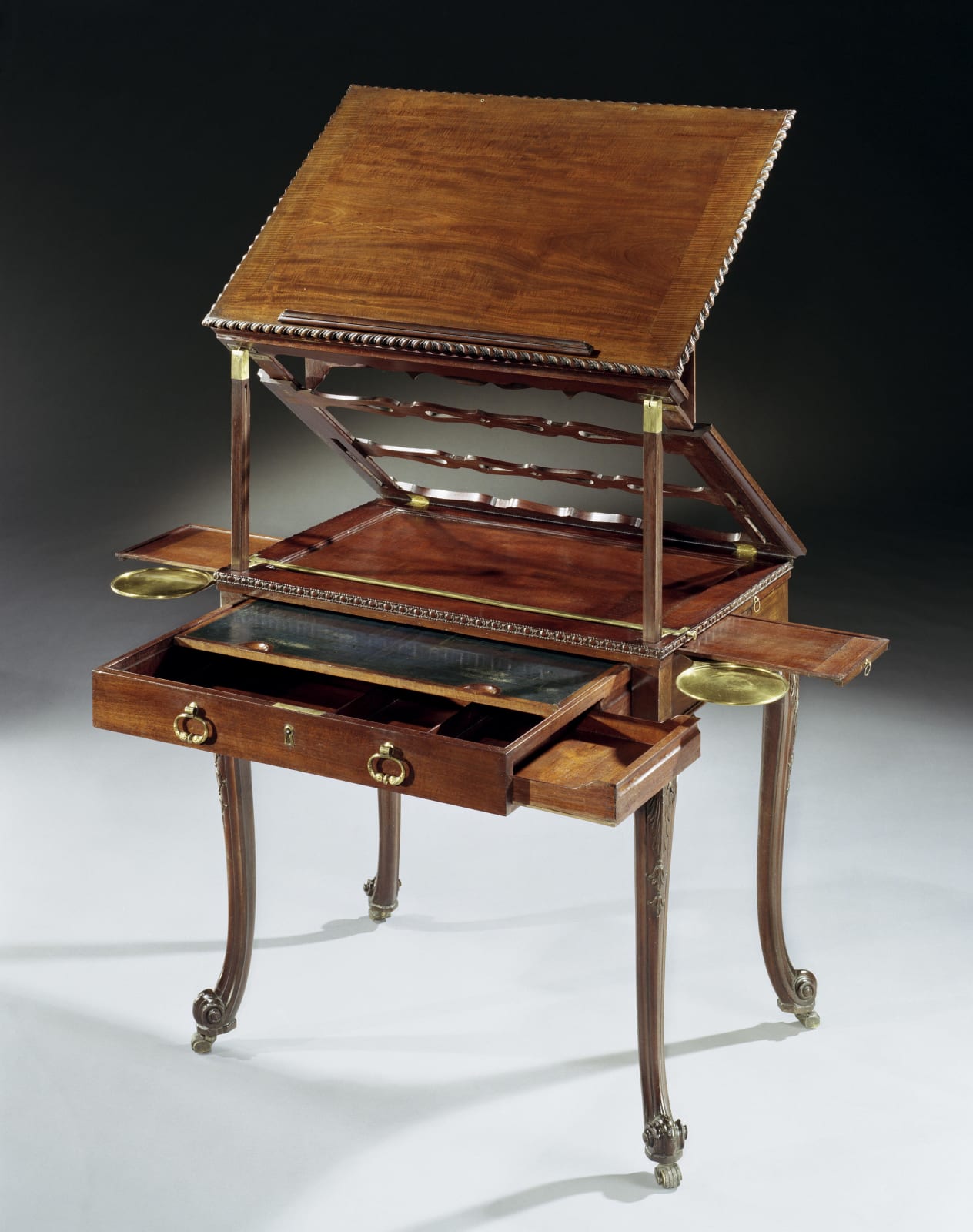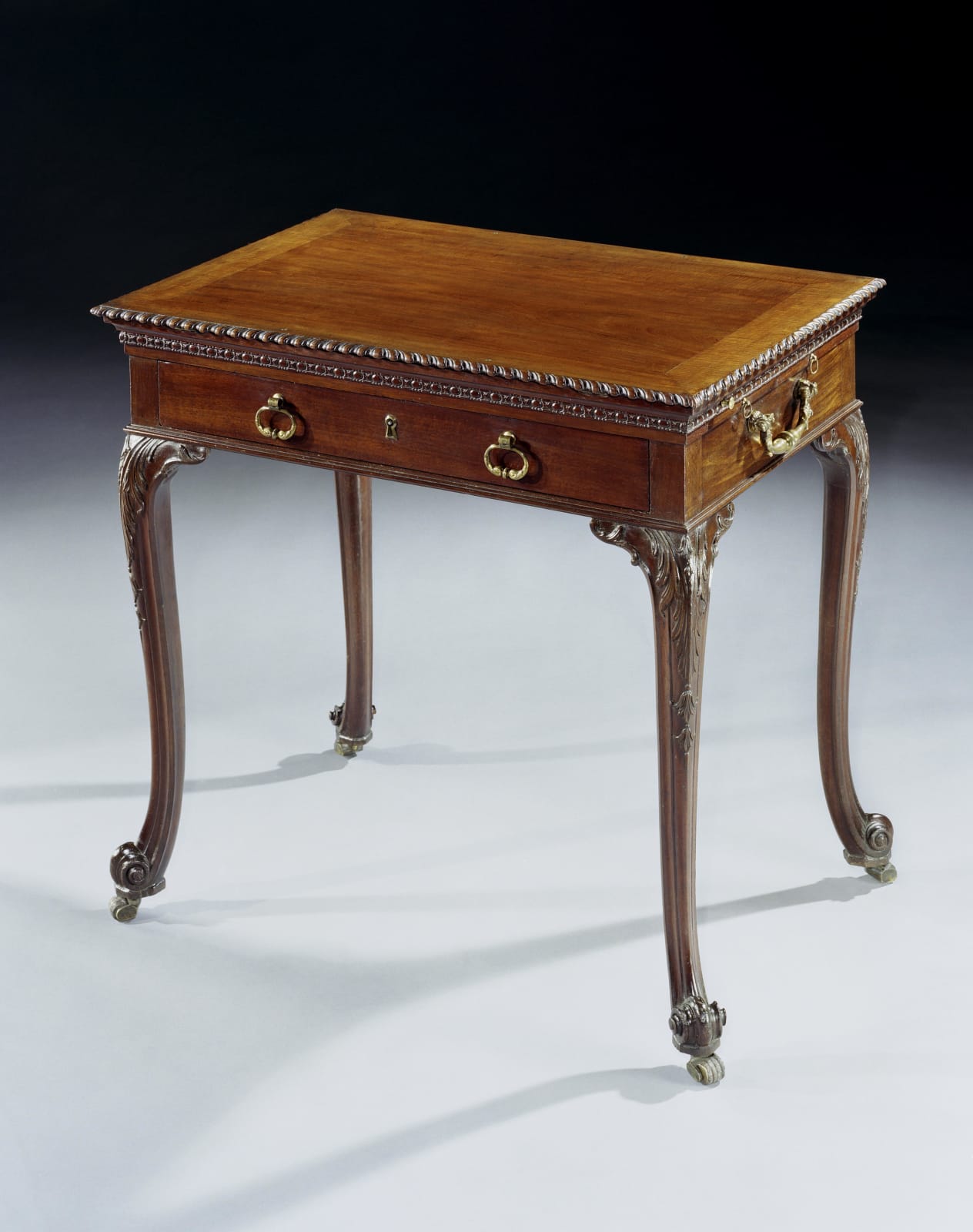-
Artworks
A GEORGE III MAHOGANY ARTIST’S TABLE ATTRIBUTED TO WILLIAM VILE, English, circa 1765
Height: 30 in; 76 cm
Width: 32 in; 81 cm
Depth: 22 in; 56 cm4469821A very rare and important mid 18th century carved mahogany artist’s table attributed to William Vile. The adjustable top with gadrooned edge and bead-moulded border and with detachable paper-rest rising...
A very rare and important mid 18th century carved mahogany artist’s table attributed to William Vile. The adjustable top with gadrooned edge and bead-moulded border and with detachable paper-rest rising from the back on a ratcheted easel joined by shaped and pierced cross-braces and supported at the front by uprights rising from within the front legs, the sides with original lacquered brass carrying handles and slides with pivoting brass circular candle supports, the frieze drawer with original oval brass pulls and containing a writing slide with leather panel and internal compartment with an additional side compartment for artist’s materials; on acanthus-carved moulded cabriole legs terminating in scroll feet on castors.Note: The quality of the carving is outstanding.
To open:
1.The mechanism is unlocked by opening the drawer about two inches.
2.Lifting the top at the front will elevate the supports from within the front legs of the table that are being held in position by a brass ratchet. The ratchet may be released by lifting the top a little higher and by rotating the brass knob on the right hand side, in a clockwise direction.
3.The top can be brought to a horizontal or higher position once the front has been extended to a minimum of 11 inches to release the back. Once released it can be lifted up being supported on the secondary timber ratchet.
To close:To close the table the reverse order has to be adhered to.
1. Releasing the secondary timber ratchet whilst the front is still extended is important. The ratchet will again fold away under the top.
2.Release the brass ratchet by gently lifting the front higher and by rotating the brass knob in a clockwise direction. The back of the top will lock once the front has been lowered down fully.
3.The whole mechanism is locked once the drawer has been closed fully.
Literature
Harold Clifford Smith, Buckingham Palace: It's Furniture, Decoration and History, 1931, p.72, illus. 64
John Harris, Geoffrey de Bellaigue and Oliver Millar, ‘Buckingham Palace’, Nelson, New York, 1968, p.113.Illustrated:
Antique Collector, February 1962, p.3.
Prides of London Ltd., trade advertisment; a similar table from the workshop of William Vile.




